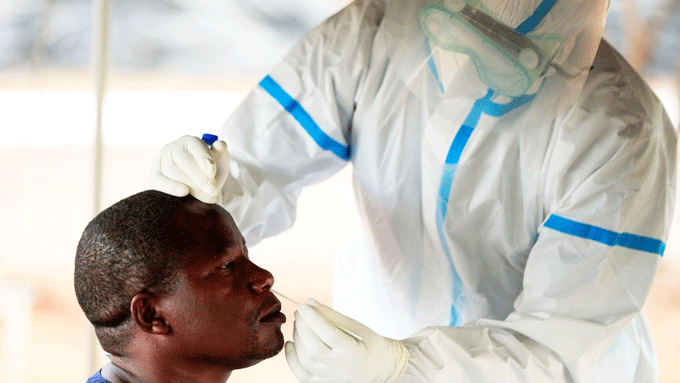
By Dr Johannes Marisa
The Global Research on Antimicrobial Resistance estimated that in 2019 alone, 1,27 million deaths were directly attributed to drug-resistant infections while about 4,95 million deaths were associated with antimicrobial resistance. This is unfortunate considering the rampant use of drugs globally, especially during this Covid-19 era where many people self-prescribed antibiotics, anti-fungals, anti-protozoa and even anti-parasitic medication. Drugs like Azithromycin, Doxycline, Ciprofloxacin, Clindamycin, Aciclovir became household names as people tried to contain the heinous Covid-19.
Antimicrobial resistance occurs when microbes evolve mechanisms that protect them from the effects of antimicrobials. The term antibiotic resistance applies to bacteria that become resistant to antibiotics. All classes of microbes can evolve resistance. Fungi evolve antifungal resistance, viruses evolve antiviral resistance, protozoa evolve antiprotozoal resistance, and bacteria evolve antibiotic resistance.
Resistance in bacteria can arise naturally by genetic mutation, or by one species acquiring resistance from another. Resistance can appear spontaneously because of random mutations; However, extended use of antimicrobials appears to encourage selection for mutations which can render antimicrobials ineffective.
What causes antimicrobial resistance
Self-medication
The Covid-19 pandemic has caused a significant rise in cases of antimicrobial resistance as a result of the several trials and overuse of different classes of drugs as well as greater access to antibiotic drugs. This is worrisome because the health sector might be facing the imminent consequence of antimicrobial resistance. Self-medication has contributed massively to this situation. In an effort to manage their own illness. Patients take the advice of false media sources, friends, and family, causing them to take antimicrobials unnecessarily or in excess.
Clinical misuse
- Chamisa under fire over US$120K donation
- Mavhunga puts DeMbare into Chibuku quarterfinals
- Pension funds bet on Cabora Bassa oilfields
- Councils defy govt fire tender directive
Keep Reading
Misuse by healthcare professionals is another cause leading to increased antimicrobial resistance. Studies done by the CDC show that the agent used, and the duration of therapy was incorrect in up to 50% of the cases studied. In another study done in an intensive care unit in a major hospital in France, it was shown that 30% to 60% of antibiotics were unnecessary.
These inappropriate uses of antimicrobial agent promote the evolution of antimicrobial resistance by supporting the bacteria in developing genetic alterations leading to resistance. This demonstrates how a majority of doctors underestimate the impact that their own prescribing habits have on antimicrobial resistance as a whole. It also confirms that some physicians may be overly cautious when it comes to prescribing antibiotics for both medical and legal reasons, even when indication for use for these medications is not always confirmed. This can lead to unnecessary antimicrobial use.
Environmental pollution
Untreated effluents from pharmaceutical manufacturing industries, hospitals and clinics, and inappropriate disposal of unused or expires medication can expose microbes in the environment to antibiotics and trigger the evolution of resistance. This therefore calls for suitable disposal of medical waste.
Livestock
The antimicrobial crisis also extends to the food industry, specifically with food producing animals. Antibiotics are fed to livestock to act as growth supplements, and a preventative measure to decrease the likelihood of infections. This results in the transfer of resistant bacterial strains into the food that humans eat, causing potentially fatal transfer of disease.
While this practice does result in better yields and meat products, it is a major issue in terms of preventing antimicrobial resistance. Though the evidence linking antimicrobial usage in livestock to antimicrobial resistance is limited, the World Health Organisation Advisory Group on Integrated Surveillance of Antimicrobial Resistance strongly recommend the reduction of use of medically important antimicrobials in livestock. Several countries have restricted the use of antibiotics in livestock, including Canada, China, Japan, and the US. These restrictions are sometimes associated with a reduction of the prevalence of antimicrobial resistance in humans.
Pesticides
Most pesticides protect crops against insects and plants, but in some cases antimicrobial pesticides are used to protect against various microorganisms such as bacteria, viruses, fungi, algae, and protozoa. The overuse of many pesticides in an effort to have a higher yield of crops has resulted in many of these microbes evolving a tolerance against these antimicrobial agents. Currently, there are over 4000 antimicrobial pesticides registered and sold to the market, showing the widespread use of these agents. It is estimated that for every single meal a person consumes, 0.3g of pesticides is used, as 90% of all pesticide use is in agriculture.
How to prevent antimicrobial resistance
People should use anti-microbes only when prescribed by their clinicians, completing the full prescription, even if they feel better, never to share anti-microbes with people who may not even require them.
Antibiotic treatment duration should be based on the infection and other health problems a person may have. In Zimbabwe, many people have abused antibiotics like Amoxyl, Ciprofloxacin, Cotrimoxazole, Erythromycin, Doxycline, using them for even viral infections. For prescription drugs, the prescriber should closely adhere to the five rights of drug administration: the right patient, the right drug, the right dose, the right route, and the right time.
Cultures should be taken before treatment when indicated and treatment potentially changed based on the susceptibility report.
Manufactures of antimicrobials need to improve the treatment of their wastewater to reduce the release of residues into the environment.
Let us remain vigilant about Covid-19 as we are at risk of the fifth wave within the next three months.










